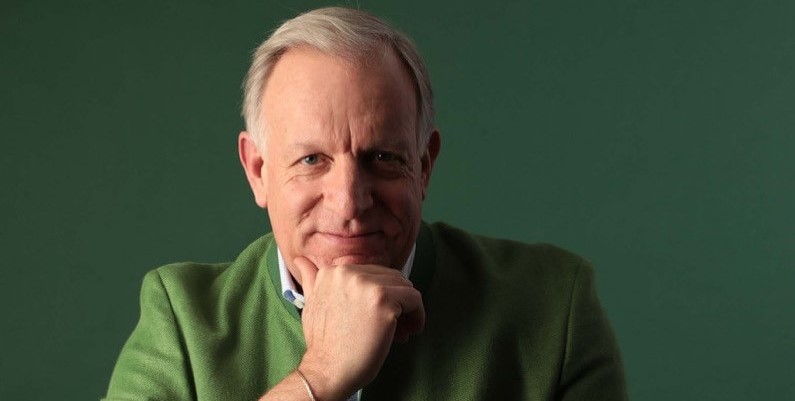

In this blog post we speak to partner Peter Bownes-Johnson about the impact of the coronavirus pandemic on the art market, almost a year since the pandemic began and the first UK lockdown was announced. As a fine art insurance broker, Peter reflects on the impacts to collectors, dealers and art markets, and we reflect on how the pandemic has changed working practices among artists, as well as the potential implications within the Fine Art insurance industry.
LAUREN: Firstly, I wanted to ask you to explain a little bit about what you do as a fine art insurance broker on a day to day basis?
PETER: On a day to day basis before the pandemic started, I would be planning my trips to the various art fairs which go on throughout the year, with the exception of July and August when collectors retreat to their holiday homes. I would generally attend 8 art fairs across the world and London, where I would meet collectors and gallery owners, as well as attending auctions at various auction houses to keep a pace of the art market and the values various artworks are reaching.
LAUREN: In terms of collectors of art from an insurance perspective, have you noticed many changes in how this takes place during the coronavirus pandemic?
PETER: There is a lot less movement of art work around the world as shippers are not moving items from galleries to art fairs or for collector viewings. Viewings are mostly made by video link at the moment, with art advisers taking a pivotal role in this process. Collectors are also more reliant on the life history of the artworks, as this provides a clear history of the artwork’s provenance. The market has totally changed from being personally interactive to video linked, meaning appointment only viewings, which has of course impacted the way we work within fine art insurance. Not being able to meet and exchange views in person is certainly challenging, but necessary for the time being.
LAUREN: Could you tell me about your experiences of art markets and fairs in 2020?
PETER: 2020 was like a void in many respects. I was scheduled to go to The Salon Du Dessin in Paris and Art Basel Hong Kong in March, however these were the first two art fairs to be cancelled. I noticed a shift in the rise of online auctions, however many fairs have simply been postponed for now. The rest of the year is history!



Since 2020, much of the art world has moved online, including the Master Drawings New York event, which was hosted online from the 22nd-30th of January 2021. This event focussed on online dealer exhibitions, where select dealers had galleries open by appointment only throughout the week. Speaking to Crispian-Riley Smith, who is an ambassador for Master Drawings New York and London Art Week, we have gathered some information on managing an online art event during the continuation of coronavirus restrictions in 2021. Master Drawings New York included 18 galleries, 6 advertiser and 2 sponsors, and operated via an appointment system on the website, which was found to be successful amongst dealers. Various online events were organised, including virtual viewings, curatorial and conservational discussions, and the online presentation of the Riccardi Prize Winner. It was also noted that the galleries involved in the event have seen pleasantly surprising sales since moving online, a sign that the art market has been successful in adapting to the changes of the last year.
With many galleries and art fairs having been postponed or moving online, the knock-on effects amongst emerging and early-career artists is also important to consider. Having limited studio and facilities access, as well as gallery representation, many artists also sought to move online. One such example is the Artist Support Pledge founded by Matthew Burrows. This pledge enables artists and creatives to sell work through #artistsupportpledge, where an artwork is listed for less than £200. The idea being here, that once the artist made £1000 through sales, they are to purchase another artist’s work through the scheme. As a result, artists have used social media to sell their work and avoid lots of the fees associated with selling through a gallery, in what can be considered a financially tumultuous time among artists. In future, it seems likely this will continue alongside the return to in-person exhibitions and events, as and when the physical art world is able to open back up.
Based upon many conversations with gallerists and collectors, we expect that international art fairs will return as hubs of dynamic and invaluable exchange for the art world. Although we still face many uncertainties today, the world of art fairs and exhibitions will be back. The question is, when?
As large-scale COVID-19 vaccination programmes have started in many countries, providing hope that at-risk populations will be inoculated in the coming months, the easing of lockdowns and travel restrictions seems possible, as and when it is safe for these countries to do so. Conversely, these vaccination programmes have only just begun, and not without some setbacks. While many economists are predicting a strong rebound once the public health situation has stabilised, it will undoubtedly be a complex phase of rebuilding, both for businesses and consumers, to return to some form of normality. We can therefore expect that the next twelve months will present many challenges, even as we may start to emerge on the other side of what has been a long, dark tunnel for many.



